How to use AI to Optimize Marketing Campaigns
This article will walk you through how to use logistic regression to optimize future marketing campaigns.
Introduction
Today, we're exploring a mock dataset featuring customer demographics and direct marketing campaign interactions for a specialty food retailer. Our goal is to demonstrate a quick, clear-cut method of data analysis with Julius that can remove guesswork and help optimize your marketing campaigns.The dataset can be accessed here. Below is a preview of the dataset:

Step-by-Step Walkthrough
Step 1: High-level purchasing behavior analysis
Let's start out with a high-level analysis of customer demographics. To understand purchasing behavior, let's see if declared income affects total spending.
Prompt: “Let’s plot income vs. total spend with a regression line.”
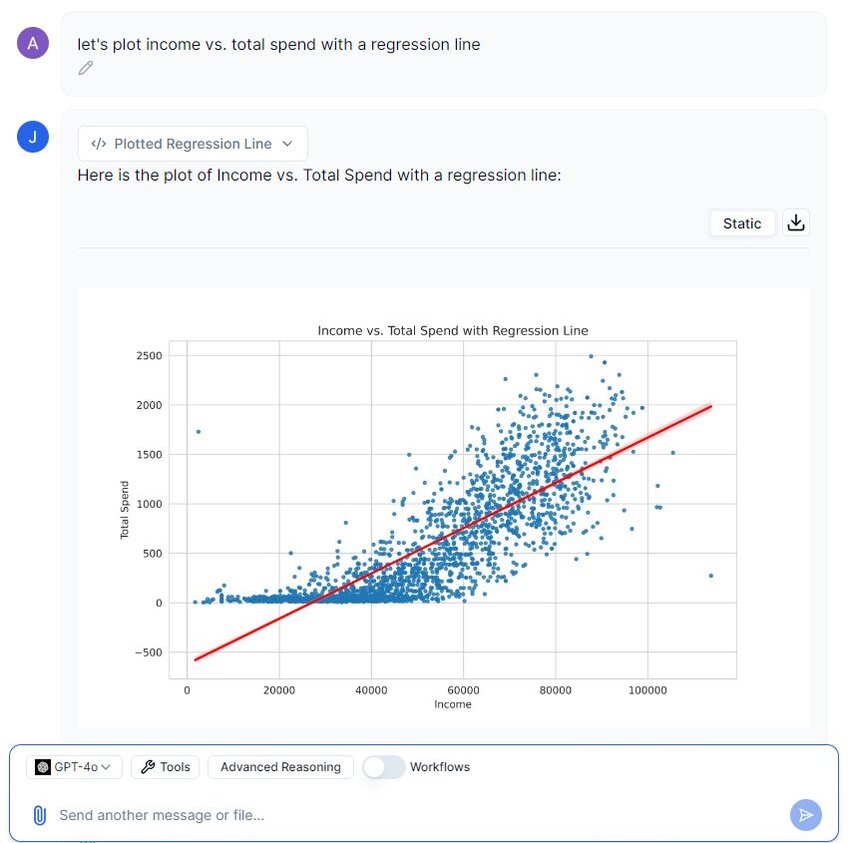
As predicted, there is a clear correlation between income and total spending. Let's dig into this a bit further.
Step 2: Further explore correlation of income and consumer spending
To understand the correlation of income with particular spending categories, let's create a regression matrix.
Prompt: “Create a linear regression matrix heatmap of income vs. the different spending categories please.”


Some insights we can derive:
- There is a high correlation between income and spending on wine and meat products.
- Gold-level products are less correlated with income than regular products.
- Those who purchase sweet products are less likely to make purchases in the wine category relative to other categories.
Now that we have an understanding of general buyer behavior, let's see if we can get a better understanding of consumer behavior related to our campaign.
Step 3: Optimize future campaigns with predictive modeling
Our next objective is to develop a model using past campaign data to predict which customers are most likely to accept the offer, ensuring the next campaign is more profitable through improved targeting.
Prompt: “Perform a complex, accurate analysis aiming to improve future campaign performance.”
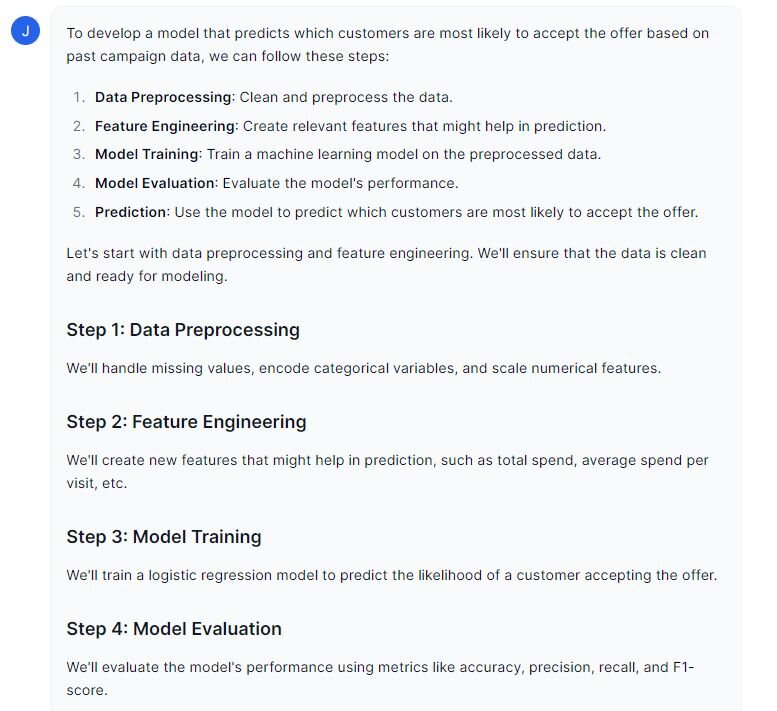
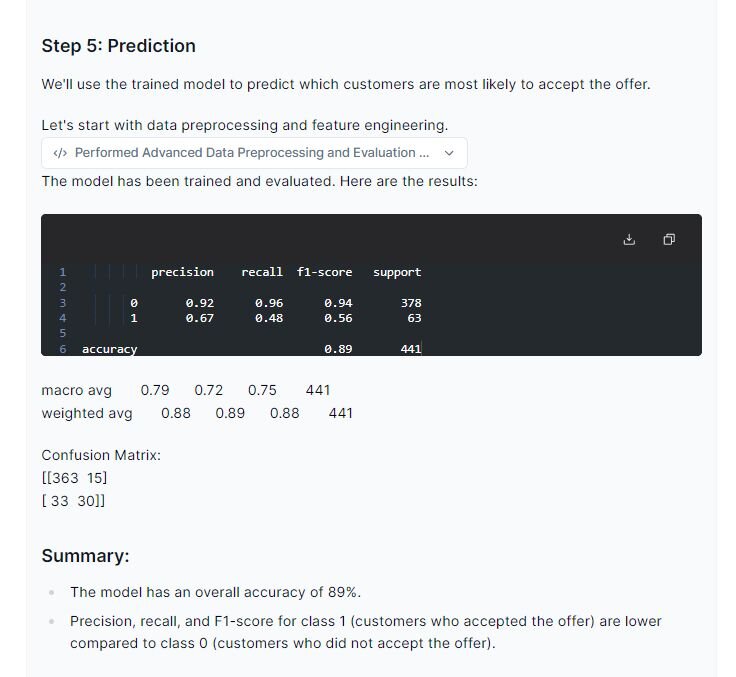
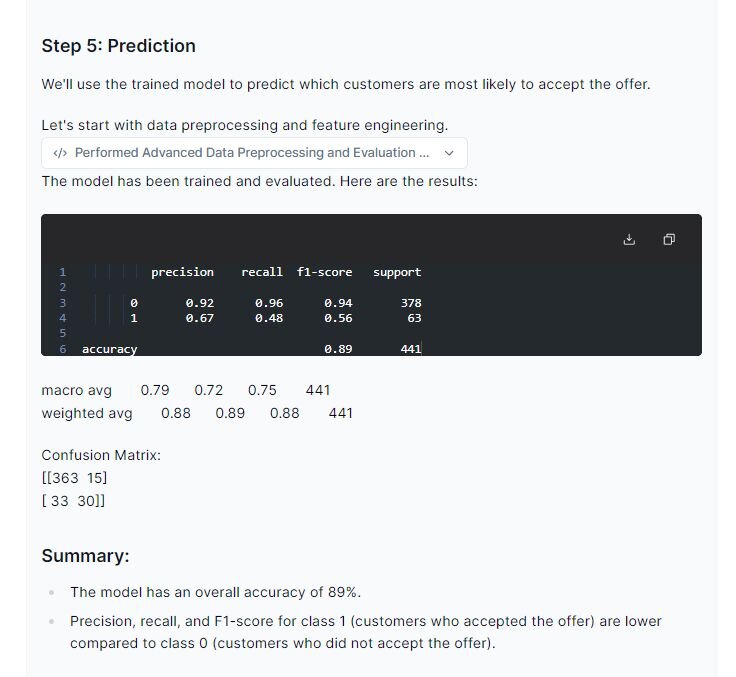
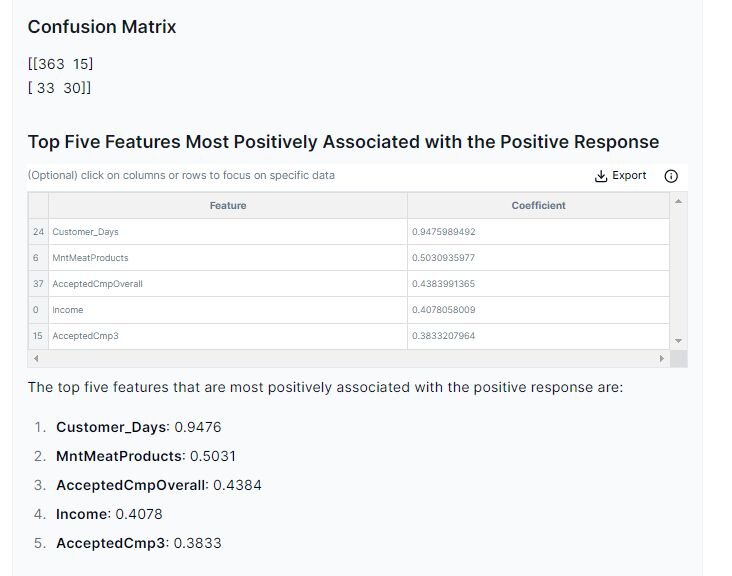
Conclusion
By running a logistic regression, we have identified the most relevant variables for predicting which consumers will accept our direct marketing campaign offer. With 89.1% accuracy, our model will help tailor future campaigns to target customers most likely to respond, removing guesswork and increasing effectiveness.
